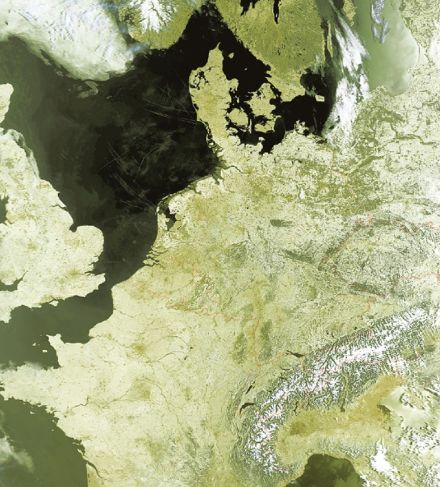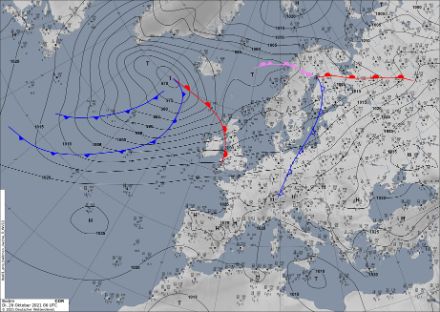Service Navigation
Search
In an anticyclone, relatively high air pressure is recorded. The highest air pressure is found in the centre of a high pressure area. Here, the air sinks over a wide area; this process is called subsidence. The sinking air is compressed and warms up, while the relative humidity of the air decreases and, as a result, clouds dissipate. High-pressure areas are therefore fair weather zones that move very slowly. They can lead to periods of good weather lasting from a few days to several weeks.

Differences between summer and winter
In a high-pressure weather situation, there are no major seasonal differences in the mountains apart from temperature. In the lowlands on the northern side of the Alps, however, the seasonal differences are considerable. Here, the only thing that can sometimes detract from the beautiful summer weather is haze. In winter, on the other hand, the Earth's surface and thus the air layers near the ground cool down considerably in a high-pressure weather situation. This results in fog, which does not always dissipate during the day between November and January. On average, the layer of fog tends to be around 200 metres thick.

How does an area of high-pressure develop?
For an area of high pressure to develop, there must be a convergent high-altitude flow, i.e. a confluence of air masses at altitude. At the same time, there must be a divergence in the lower air layers, i.e. air masses flowing apart. Moreover, the convergence must be stronger than the divergence. This causes the air pressure to rise and an area of high pressure to form. The air pressure only stops rising when the convergence at altitude and divergence in the lower air layers are balanced. Fora strong high to develop, it needs "a little more weight" in the air column. This is achieved by a cold air mass, which is significantly heavier than a warm air mass due to its higher density.
The Azores High
In the area of the Azores, the Portuguese archipelago in the Atlantic, there is a large subtropical high-pressure area that is more or less constant. Together with the Icelandic Low (low pressure situation), the Azores High determines the overall weather system of Europe. The Azores High can sometimes extend over central Europe, leading to mid-summer conditions or, in winter, to an inversion with warm air at altitude and fog and cold air in the lowlands.